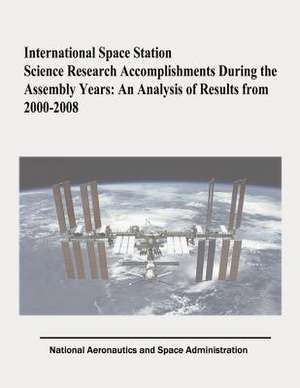International Space Station Science Research Accomplishments During the Assembly Years
Autor National Aeronautics and Administration, Cynthia a. Evans, Julie A. Robinsonen Limba Engleză Paperback
Preț: 158.03 lei
Nou
Puncte Express: 237
Preț estimativ în valută:
30.24€ • 31.46$ • 24.97£
30.24€ • 31.46$ • 24.97£
Carte disponibilă
Livrare economică 24 martie-07 aprilie
Preluare comenzi: 021 569.72.76
Specificații
ISBN-13: 9781481023924
ISBN-10: 1481023926
Pagini: 260
Dimensiuni: 216 x 279 x 14 mm
Greutate: 0.61 kg
Editura: CreateSpace Independent Publishing Platform
ISBN-10: 1481023926
Pagini: 260
Dimensiuni: 216 x 279 x 14 mm
Greutate: 0.61 kg
Editura: CreateSpace Independent Publishing Platform
